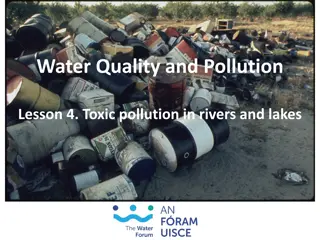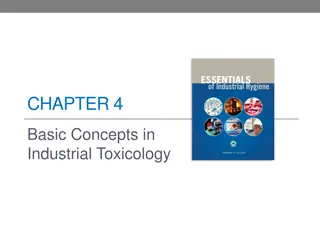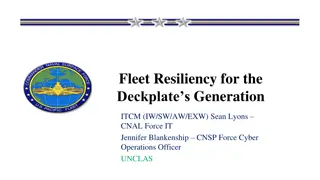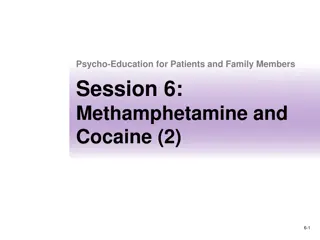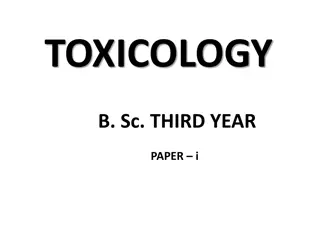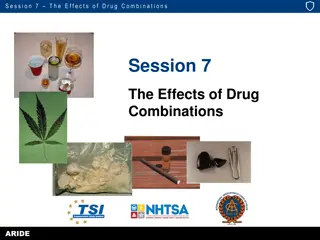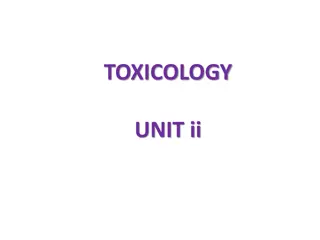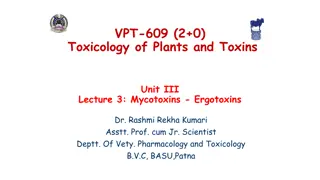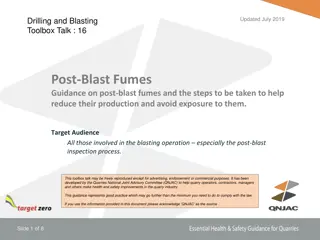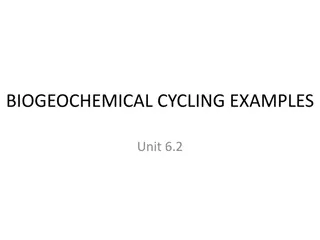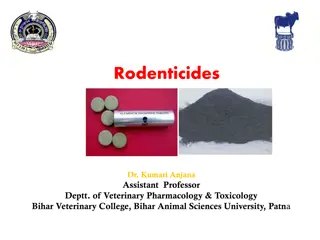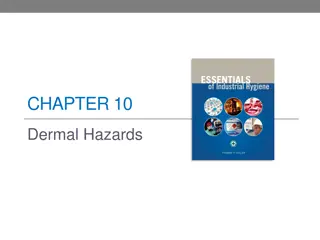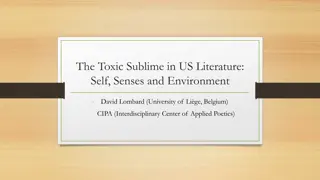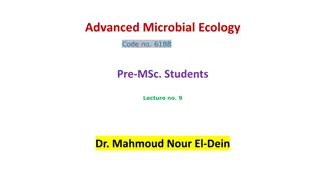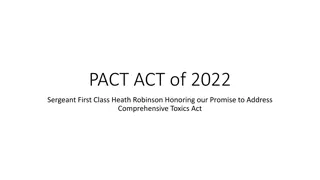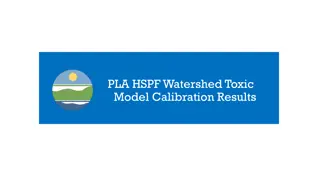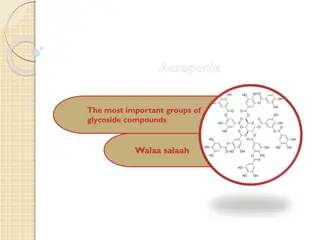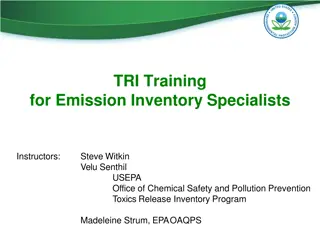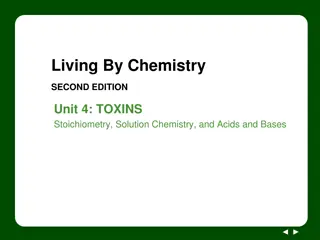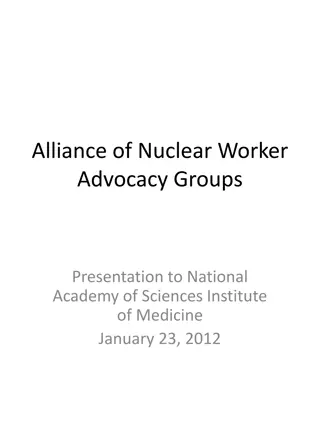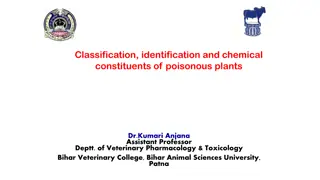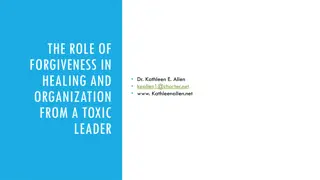Abrus precatorius
Abrus Precatorius, also known as the jequirity bean or rosary pea, is a highly toxic plant that is found throughout the tropics. Its seeds are used in jewelry and necklaces, but they can be fatal if ingested. This article explores the distribution, toxic principle, animals affected, mechanism of tox
18 views • 23 slides
Bhopal Gas Tragedy: A Devastating Industrial Disaster
Among the worst industrial disasters of its time, the Bhopal Gas Tragedy occurred on 3rd December 1984 in Bhopal, Madhya Pradesh, India. The tragedy was caused by the release of 27 tons of Methyl Isocyanate gas by the Union Carbide Corporation, resulting in the exposure of over 500,000 people. To da
6 views • 20 slides
Understanding Feminism, Sexism, and Toxic Masculinity - A Reflection on Gender Equality
Explore the concepts of feminism, sexism, and toxic masculinity through activities and discussions, challenging misconceptions and promoting gender equality. Reflect on learning and origins of misconceptions to foster a more inclusive society.
0 views • 7 slides
Understanding Toxic Pollution in Rivers and Lakes
Toxic pollution in rivers and lakes is a pressing environmental issue caused by various pollutants such as metals, pesticides, chemicals, and microbial contaminants. These pollutants can have detrimental effects on aquatic life, human water use, and health. Learn about the impact of toxic pollutants
2 views • 20 slides
Understanding Basic Concepts in Industrial Toxicology
Industrial toxicology is a vital field that studies the effects of various agents on organism health through mechanisms of action, toxicokinetics, and more. It explores toxic chemical absorption, distribution, metabolism, and elimination, as well as toxic effects on major organ systems. Learn about
0 views • 35 slides
Expansion of Health Care Eligibility for Toxic-Exposed Veterans
This Title expands the eligibility criteria for Toxic-Exposed Veterans in 38 U.S.C. 1710 by refining the definition of Vietnam-era herbicide-exposed veterans to include those who performed covered service in specified locations. It introduces three new categories of eligible veterans based on toxic
1 views • 19 slides
Challenges and Solutions in Fleet Resiliency for the Deckplate's Generation
Fleet resiliency for the deckplate's generation faces training gaps, barriers, motivation battles, and toxic leadership issues. Lack of foundational skills and reliance on technical documentation hinder self-sufficiency. Toxic leadership and communication barriers impact motivation and retention. De
2 views • 9 slides
Urea Biosynthesis and the Krebs-Henseleit Cycle in the Liver
Urea is synthesized in the liver through a series of enzymatic steps known as the urea cycle or Krebs-Henseleit cycle. This process involves converting toxic ammonia into urea, a less toxic and water-soluble compound that can be easily excreted in urine. The liver plays a crucial role in urea biosyn
1 views • 20 slides
Risks and Effects of Methamphetamine, Cocaine, and Shabu Abuse
Understanding the dangers associated with methamphetamine, cocaine, and shabu abuse is crucial. Shabu is not pure methamphetamine and contains harmful impurities, while injecting, snorting, or smoking it can lead to various health risks. Methamphetamine abuse can result in severe physical and mental
0 views • 23 slides
Understanding The PACT Act and Its Impact on Veterans
The PACT Act, named after Sgt. First Class Heath Robinson who succumbed to lung cancer from toxic exposure, is a law enhancing VA benefits for veterans exposed to harmful substances. It expands VA health care eligibility, ensures toxic exposure screenings, and mandates research studies on veteran he
0 views • 24 slides
Introduction to Toxicology: Science and Impact on Living Organisms
Toxicology is the study of adverse effects of chemicals on living organisms. It assesses probability of occurrence, quantitatively and qualitatively analyzing toxic effects. Toxicants are agents causing harmful responses in biological systems. Environmental toxicology focuses on pollutants' effects
0 views • 12 slides
Analyzing Interaction Effects in Composite-Based SEM
Explore the concept of interaction effects in composite-based structural equation modeling (SEM) through topics like the logic of interaction, estimating effects, multigroup analysis, and visualizing effects. Learn about moderators, their role in relationships between variables, and techniques for a
1 views • 23 slides
Understanding the Effects of Drug Combinations in ARIDE Session 7
Dive into Session 7 of the ARIDE program to explore the prevalence of drug and alcohol use, the concept of polydrug impairment, and the potential effects of combining different substances. Learn about null effects, overlapping effects, and how various drug combinations can impact impairment indicato
0 views • 18 slides
Overview of Toxicology: Understanding Chemical Risks and Health Impacts
Toxicology is a crucial field that assesses the effects of various toxic substances on human health and the environment. From heavy metals to solvents, radiation, pesticides, and animal toxins, this discipline plays a vital role in identifying and managing risks associated with exposure to harmful c
0 views • 25 slides
Food Safety and Toxicology: Adulterants and Detection Methods
Food adulteration can have harmful effects on health by altering the natural composition of food. Learn about the risks of adulterants, their effects, and methods for detecting them in food products. Ensuring food safety is crucial to prevent toxic compounds and nutrient deficiencies that can impact
0 views • 15 slides
Understanding Ergot Alkaloids: Toxicology of Plants and Toxins
Ergot alkaloids are toxins produced by parasitic fungi that invade cereal crops and grasses, leading to the formation of ergot. These toxins, including ergometrine and ergotamine, have various effects on the central nervous system, smooth muscles, and overall health. Ergotism, resulting from the ing
0 views • 14 slides
Post-Blast Fumes: Guidance on Mitigating Toxic Gases in Drilling and Blasting Operations
Explosives used in blasting operations generate post-blast fumes, which can contain toxic gases like oxides of nitrogen (NOx) and carbon monoxide. This toolbox talk provides guidance on reducing fume production and avoiding exposure, with a focus on the physiological effects of different gas compone
0 views • 11 slides
Understanding Nutrient Pollution and Its Impact on the Environment
Nutrient pollution, characterized by the excess input of nitrogen and phosphorus into water and air, is a significant environmental issue with far-reaching consequences. It can lead to toxic algae blooms, dead zones, economic losses, and adverse effects on human health. The causes of nutrient pollut
2 views • 11 slides
Understanding Rodenticides: Types, Effects, and Treatment
Rodenticides are chemical preparations used for rodent control, primarily targeting mice and rats. They play a crucial role in managing rodent populations to prevent associated losses. The chapter covers an introduction to rodenticides, their classification into organic and inorganic types, mechanis
0 views • 19 slides
Understanding Poisonous Plants and Their Effects on Humans
Poisonous plants can have deleterious effects on individuals, leading to severe consequences and even death if not managed properly. These plants produce toxins that interfere with the body's essential functions, ultimately causing impairment and potential fatality. Recognizing the grades of poisoni
0 views • 11 slides
Understanding Interaction Effects in Regression Analysis using SAS 9.4
Regression models help analyze effects of independent variables (IVs) on dependent variables (DVs, like weight loss from exercise time). Interactions explore how one IV's effect can be modified by another IV (moderating variable, MV). In this seminar's purpose, techniques to estimate, test, and grap
0 views • 137 slides
Understanding Dermal Hazards: Anatomy, Toxic Absorption, and Health Effects
Explore the key anatomy and physiology of the skin, learn how toxic agents are absorbed, understand the adverse health effects of skin exposure to hazardous agents, discover methods of dermal exposure assessment, and develop controls to minimize skin exposure to dangerous substances.
0 views • 26 slides
Understanding Chemical and Biological Weapons Proliferation Risks
Exploring the risks associated with chemical and biological weapons proliferation, covering topics such as war scenarios, terrorism, dual-use issues, international conventions, and emerging threats. This includes discussions on the use of toxic chemicals in various settings, along with examples of p
0 views • 8 slides
Understanding Media Effects on Development: Strong, Limited, and Nil Impact (Continuation)
American psychologists have traditionally believed in strong media effects, attributing direct influence on audiences. However, the limited effects theory emerged in the 1940s, challenging this notion by suggesting media's negligible impact on behaviors such as voting. On the other hand, proponents
0 views • 6 slides
Exploring the Toxic Sublime in US Literature
Investigating the aesthetic dimensions of Thoreau's environmental philosophy and its capacity to blur boundaries between natural and technological landscapes, David Lombard's research delves into the concept of the toxic sublime in literature. By redefining the sublime for the Anthropocene era, the
0 views • 10 slides
Understanding Heavy Metals and Their Impact on Organisms in the Environment
Heavy metals, such as zinc and copper, persist in the environment posing health risks to organisms. Industrial activities release toxic metals into water sources. Microorganisms can interact with heavy metal ions, altering their toxicity and resistance. Essential heavy metals are needed in small amo
0 views • 24 slides
PACT ACT of 2022: Addressing Comprehensive Toxics Exposure for Veterans
The PACT ACT of 2022, spearheaded by Sergeant First Class Heath Robinson, aims to address comprehensive toxics exposure issues for veterans. The bill includes provisions such as expanded healthcare, improved VA services, recognition of burn pit exposure, enhancement of compensation for Persian Gulf
0 views • 22 slides
If you are looking for Gel X in Los Altos Hill
If you are looking for Gel X in Los Altos Hill, 4hands Beauty is the first clean and non toxic nail salon in North Los Altos! We don't use acrylic and other harsh materials in our work, so there is no harmful evaporations and toxic smell in our salon
0 views • 6 slides
PLA HSPF Watershed Toxic Model Calibration Results Summary
This summary provides insights into the calibration results of the PLA HSPF Watershed Toxic Model. It includes information on the Green/Duwamish River sub-watersheds, estimated loads to LDW toxic load reach 604, and the statistical calibration targets for HSPF toxic simulations. The calibration sequ
0 views • 10 slides
Effects of Toxic Materials in Device Fabrication and Environmentally Friendly DSSC Options
Negative effects of toxic materials used in device fabrication processes include reproductive health issues, cancer risks, and respiratory abnormalities for workers. Dye Sensitized Solar Cells (DSSC) present a more cost-effective and simpler alternative to silicon solar cells, with metal sensitizers
0 views • 17 slides
Nuclear Receptor-Mediated Toxicity: Molecular Insights and Implications
TOXICOLOGY research on Nuclear Receptor-Mediated Toxicity by Prof. Zdeněk Dvořák delves into the evidence, molecular properties, structures, and signaling pathways of nuclear receptors such as Aryl Hydrocarbon Receptor (AhR). Detailed information on the impact of AhR-mediated toxicity, including
0 views • 19 slides
Overview of Important Glycoside Compounds and Their Properties
Glycoside compounds play a significant role in various biological processes, with groups like steroids and cardenolides showcasing notable medicinal effects. Steroids are crystalline substances with specific solubility characteristics, while cardenolide glycosides are known for their toxic effects o
0 views • 13 slides
Collective Effects in High-Energy Physics Facilities
Collective effects play a crucial role in Higgs factories and high-energy physics facilities. Impedance effects are proportional to beam-induced voltage, with peak bunch current impacting SB effects and average current affecting MB effects. Factors like beam loading compensation and detuning of the
0 views • 5 slides
Understanding Toxics Release Inventory (TRI) Program
Toxics Release Inventory (TRI) program is a reporting system that tracks the waste management of toxic chemicals posing threats to human health and the environment. It was created in response to tragic incidents like the Bhopal disaster, aiming to provide information on toxic releases from industria
0 views • 26 slides
Understanding Toxicity: Mole-Mass Conversions in Chemistry
Explore the toxic nature of arsenic compounds and learn how to convert between moles and mass in this chemistry lesson. Understand the relationships between mass, moles, and the number of particles in a substance, and practice converting moles to mass and vice versa. Work in pairs to delve into the
0 views • 10 slides
Alliance of Nuclear Worker Advocacy Groups Presentation on Toxic Substances Exposure
Presentation by Alliance of Nuclear Worker Advocacy Groups addressing the need to develop a matrix of toxic substances and related diseases to facilitate timely compensation for DOE workers. Emphasizes the importance of thorough documentation and recognition of exposure risks. Discusses applicable l
0 views • 10 slides
Managing Toxic People in Your Organization
Understanding the three types of individuals - wise, foolish, and evil - can help you identify and handle toxic people effectively. Limit your interactions with foolish individuals, remove toxic people completely, and surround yourself with wise individuals to build a healthy organizational culture.
0 views • 8 slides
Overview of Poisonous Plants: Classification, Identification, and Toxic Chemical Constituents
This detailed chapter delves into the classification, identification, and chemical constituents of poisonous plants, shedding light on natural toxins, alkaloids, and toxic principles. It covers the role of alkaloids in plant toxicity, highlighting specific types such as piperidine alkaloids, pyrroli
0 views • 17 slides
The Role of Forgiveness in Healing and Organization Recovery from Toxic Leadership
Toxic leaders can leave lasting damage in organizations even after they are gone. Forgiveness plays a crucial role in healing individuals and the organization as a whole. It is an internal choice that allows for the transformation from passive hope to active hope. Creating conducive conditions for f
0 views • 13 slides
Understanding Forage Value and Poisonous Plants in Rangelands
Explore the factors influencing plant nutritive value, such as cell structure, lignification, and anti-quality factors. Learn about the impact of toxic plants on livestock, including death, birth defects, and neurological effects. Discover the types and characteristics of toxic or poisonous plants c
0 views • 13 slides



